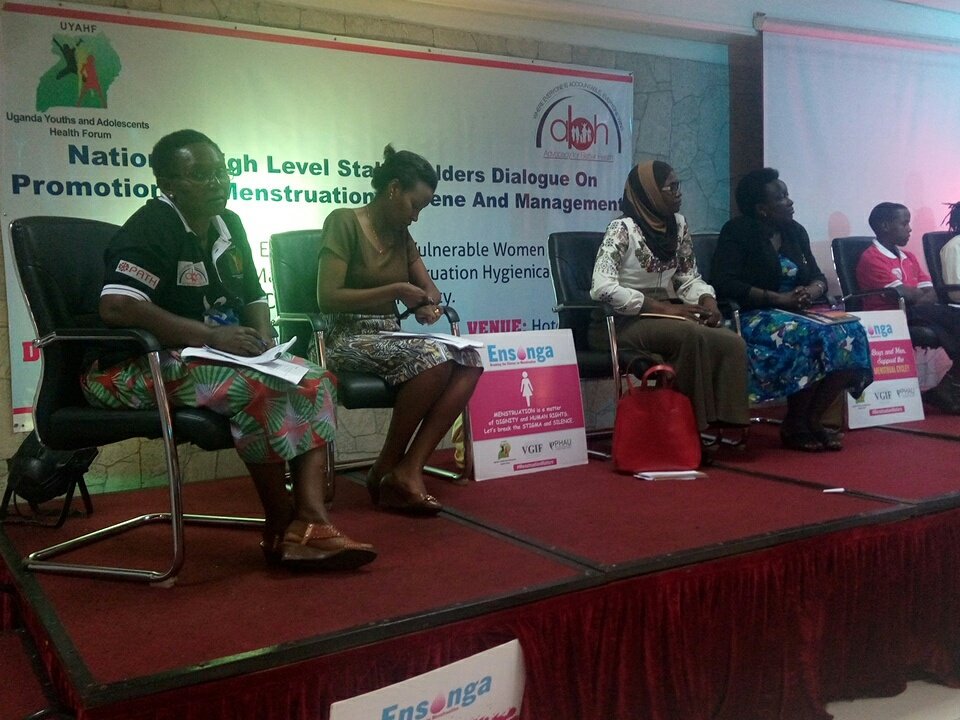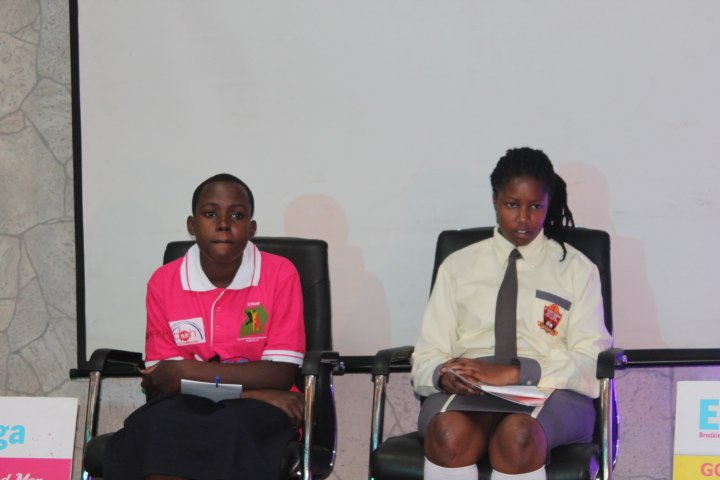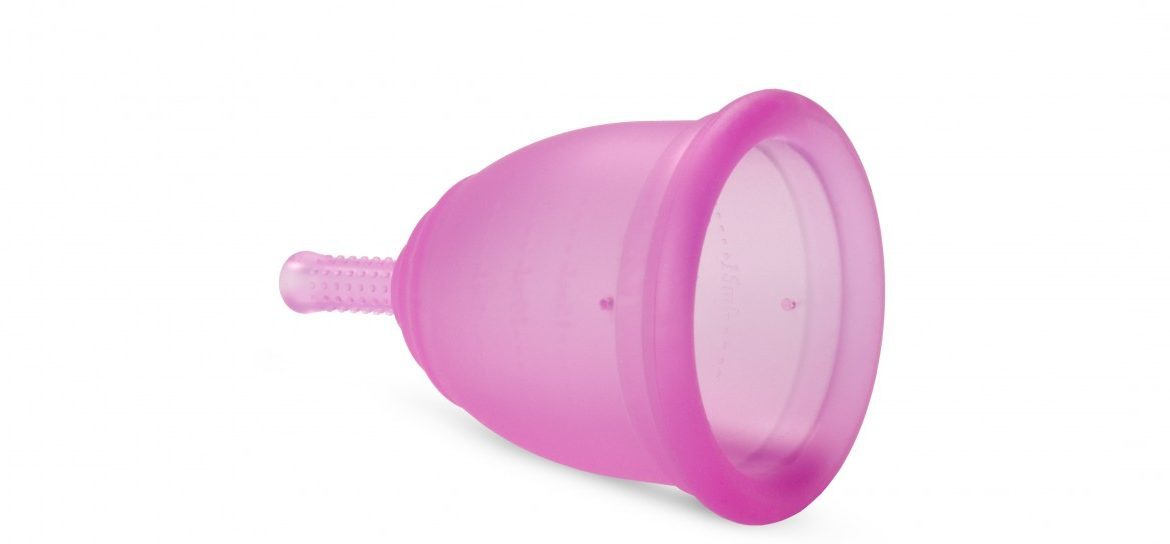Every 28th May, the world celebrates Menstrual Hygiene day. This year’s topic was ‘ Education about menstruation changes everything,’ and I certainly agree with the topic. The first course of action should be to create information and to inform the populace.

On 13th June (Yesterday), Uganda Youth Adolescents Health Forum (UYAHF) a youth led organization established by young people to respond to the sexual reproductive health and livelihood needs of young people conducted a dialogue under the theme ‘Creating a supportive environment for women and girls in Uganda to manage menstruation hygienically and with dignity and in privacy’, dubbed the National High level stake holders dialogue on promotion of menstruation hygiene and management.

Here we saw a young girl (P.7) in primary school, Priscilla from St. Joseph Primary school narrate her story, “my uniform was soaked in blood, I didn’t know what to do but to cry,” amidst dead silence, she managed to say. Many young girls are missing school because they don’t know anything about menstruation by the time it visits. However, we must embrace the fact that menstruation is natural, important, and all girls should be helped go through it rightly, with dignity and in privacy.
Hon. Sheila Mwine, MP of Kiruhura emphasized the use of re-usable sanitary pads as a sustainable approach towards menstrual hygiene, she added that Government’s commitment to the Sustainable Development Goals (SDGs) is proof that government is promoting health of young people.

Deputy Mufti of Uganda, Imam of Makerere University Business School (MUBS), Sheikh Waisswa Ali Muhammed talked about the role of religious leaders in curbing religious & cultural taboos around menstruation. “Menstruation is fused with impurity in Islam but we have systems in place to support women during this time,” Sheikh Waisswa said, he added that “Islam addressed the issue of menstruation 1430 years ago.”
Other panelists included, a senior woman teacher from St. Josephs primary school, Ms Christine Kaganju from United Nations Population Fund (UNFPA), Madam Madina, a representative from the Ministry of Gender, Ms. Nakyanzi a representative from the Ministry of Education who also emphasized that Promotion of girls education has been on the agenda of government for the last three decades.

Different stakeholders tried to paint a picture of what their positions are in promoting menstrual hygiene in Uganda. The session ended with a teaching on how to use the menstrual cup and I will do the same here.
The menstrual cup
A menstrual cup is a bell shaped cup with a stem used by women to catch menstrual flow.

The menstrual cup is placed into the vagina to trap menstrual flow. The stem is used to fix it in and pull it out for emptying. Every 4-12 hours, the cup is withdrawn from the vagina for emptying, cleaning, and fixing back. Silicone cups and rubber cups are reusable and only these can be put back after removal more reason as to why they are recommended.
FYI, the menstrual cup can be reused for up to 5 years making it a more cheap and sustainable method of trapping or dealing with menstrual flow. You should also note that each cup has much more capacity than a tampon.
The menstrual cup comes in different sizes, the smaller size for ladies below 30 who have never pushed out a baby and the larger size for ladies above 30 and those that have vaginally given birth and for the ladies with heavy flow.
Usage
Using a menstrual cup is not much different from using a female condom. To use the menstrual cup, the cup is first folded or pinched, and then inserted into the vagina where it slowly unfolds closing off the vaginal walls being able to trap menstrual flow.

After about 4–12 hours of use (depending on the amount of flow), the cup is removed by reaching up to the stem of the cup in order to find the base. The stem of the cup is pinched to avoid suction while pulling out. After pinching the stem of the cup, it can then be pulled out gently. After emptying, the reusable cup should be rinsed or wiped and reinserted. It can be washed with mild soap, and sterilized in boiling water for a few minutes at the end of the cycle. ss
Ps. I will not talk about the disposable cups. But if you are looking to have sex during your period, the disposable cups will enable you have mess free sex since your partner won’t feel them and there won’t be blood to bother you.
Why you should consider the Menstrual Cup
- Pocket and echo friendly
- Can stay in for 12 hours
- Holds more capacity than a tampon
- It’s safe
- There’s less odor.
Other resources to help in the use of a menstrual cup




Leave a reply to ZeroWastingPH Cancel reply